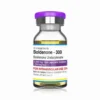What is Xanax? An Overview
Xanax, known generically as alprazolam, is a medication classified under the benzodiazepine family. Benzodiazepines are a class of drugs primarily used for their sedative and anxiolytic effects. Xanax is chemically composed of a triazole ring fused with a benzodiazepine structure, which contributes to its unique pharmacological properties. As a central nervous system depressant, Xanax functions by enhancing the effects of gamma-aminobutyric acid (GABA), a neurotransmitter that inhibits brain activity. This mechanism results in a calming effect, making Xanax highly effective in treating anxiety and panic disorders.
Xanax is commonly prescribed for the short-term management of anxiety disorders, including generalized anxiety disorder (GAD) and panic disorder. It can help alleviate symptoms such as excessive worry, restlessness, and sudden, intense fear episodes. The medication is available in various dosages, typically ranging from 0.25 mg to 2 mg. It comes in several forms, including immediate-release tablets, which provide rapid relief, and extended-release tablets, designed to maintain a steady level of the drug in the system over an extended period.
However, the use of Xanax is not without potential side effects. Common adverse reactions include drowsiness, dizziness, and impaired coordination. More severe side effects can occur, such as mood changes, hallucinations, and difficulty breathing, particularly at higher dosages or with prolonged use. Due to its high potential for dependence and abuse, it is crucial that Xanax is used strictly under medical supervision. Physicians typically recommend the lowest effective dose for the shortest duration possible to mitigate risks associated with long-term use. Understanding the benefits and risks of Xanax is essential for those considering its use as part of their treatment plan.
Medical Uses and Benefits of Xanax
Xanax, a widely recognized medication, is primarily prescribed for the treatment of various anxiety-related disorders. One of its most common applications is for patients diagnosed with generalized anxiety disorder (GAD). Individuals suffering from GAD often experience excessive worry and anxiety about numerous aspects of daily life, and Xanax can offer substantial relief by calming the central nervous system, thereby reducing the intensity of anxiety symptoms.
In addition to GAD, Xanax is frequently used to manage panic disorder, a condition characterized by sudden and repeated episodes of intense fear. These panic attacks can be debilitating, but Xanax helps to alleviate the symptoms quickly, providing patients with the ability to regain control and function more normally in their daily activities. For some patients, Xanax may also be prescribed to address insomnia, particularly when it is associated with anxiety. By promoting relaxation and sleep, Xanax can improve the overall quality of life for individuals grappling with these challenging conditions.
The benefits of Xanax are most pronounced when the medication is used under strict medical supervision. Physicians carefully determine the appropriate dosage to ensure maximum efficacy while minimizing the risk of side effects. It is crucial for patients to adhere to the prescribed dosage and schedule, as improper use can lead to dependency and misuse, potentially resulting in serious health consequences. Therefore, ongoing communication between the patient and healthcare provider is essential to monitor the medication’s impact and make any necessary adjustments.
Overall, when taken responsibly and as prescribed, Xanax can offer significant therapeutic benefits for individuals dealing with severe anxiety and panic disorders, ultimately enhancing their ability to lead more comfortable and productive lives.
Xanax Regulations and Availability in Italy
In Italy, Xanax is classified as a prescription-only medication, meaning it cannot be obtained over-the-counter. The regulation of Xanax, like other pharmaceuticals, falls under the purview of the Italian Medicines Agency (AIFA). AIFA oversees the approval, distribution, and monitoring of medications to ensure they meet the stringent safety and efficacy standards required for public health.
To obtain Xanax in Italy, individuals must undergo a medical consultation with a licensed healthcare provider. This consultation is crucial as it allows the healthcare provider to assess the patient’s condition, determine the appropriateness of Xanax as a treatment option, and prescribe the correct dosage. Following the consultation, the prescription must be filled at a licensed pharmacy, where pharmacists are mandated to verify the authenticity of the prescription before dispensing the medication.
The legal framework governing the prescription and sale of Xanax in Italy is designed to prevent misuse and ensure that the drug is used safely and effectively. Specific guidelines dictate the conditions under which Xanax can be prescribed, emphasizing the importance of a thorough medical evaluation. These regulations are in place to minimize the risk of dependency and other adverse effects associated with benzodiazepines.
In addition to the standard tablet form, Xanax is also available in drops in Italy. Xanax drops are often prescribed for patients who may have difficulty swallowing tablets or require a more flexible dosing regimen. The liquid form allows for precise dose adjustments and can be particularly beneficial for patients with varying levels of anxiety or panic disorder symptoms. The availability of Xanax drops provides an alternative method of administration, offering the same therapeutic benefits as the tablet form but with added convenience for certain patients.
Overall, the regulatory landscape for Xanax in Italy is comprehensive, ensuring that the medication is prescribed responsibly and used under medical supervision. This approach helps safeguard public health while providing necessary access to those who genuinely need it.
Risks and Precautions When Using Xanax
Understanding the risks and precautions associated with Xanax is crucial for anyone considering or currently using this medication. Xanax, a benzodiazepine, is commonly prescribed for anxiety and panic disorders. However, its use carries significant risks, particularly if not managed under strict medical supervision.
One of the primary dangers of Xanax lies in its potential for dependency and addiction. This risk is heightened with long-term use or misuse. As the body becomes accustomed to the presence of the drug, higher doses may be needed to achieve the same effect, leading to a cycle of increasing use and dependency. This can culminate in addiction, where the individual feels unable to function without the drug.
Withdrawal symptoms are another critical concern. Abruptly stopping Xanax use can lead to severe withdrawal symptoms, including anxiety, insomnia, seizures, and, in extreme cases, life-threatening complications. Therefore, it is imperative to taper off the medication gradually under the guidance of a healthcare provider to minimize these risks.
Safe use of Xanax involves adhering strictly to the prescribed dosage and frequency. Combining Xanax with alcohol or other central nervous system depressants can be particularly dangerous, potentially leading to enhanced sedative effects, respiratory depression, or even fatal overdose. It is essential to avoid such combinations and follow the healthcare provider’s instructions meticulously.
Recognizing the signs of a Xanax overdose is crucial for timely intervention. Symptoms of an overdose include severe drowsiness, confusion, impaired coordination, reduced reflexes, and loss of consciousness. If an overdose is suspected, immediate medical attention is necessary. Contact emergency services and provide them with all relevant information about the individual’s Xanax use and any other substances they may have taken.
By understanding these risks and taking appropriate precautions, individuals can use Xanax more safely and effectively, ensuring that its benefits are maximized while minimizing potential harm.
Recensisci per primo “Xanax | Xanax Gocce” Annulla risposta
Prodotti correlati
Non Categorizzato
Non Categorizzato










Recensioni
Ancora non ci sono recensioni.